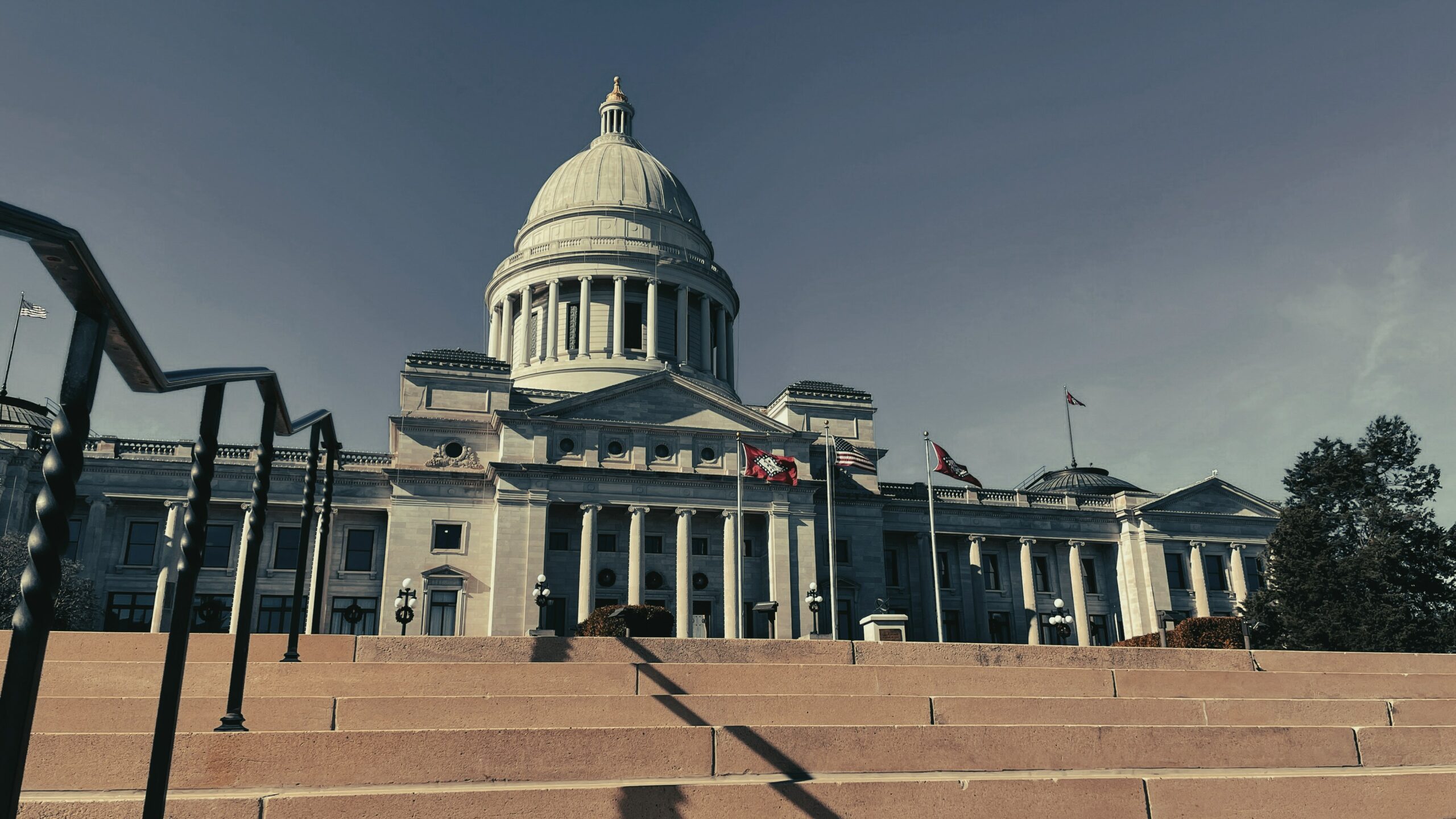With Mullenix & Associates Support, Clients “Lead the Way in Green Steel Innovation”
By Chloe McGehee
Arkansas Business
July 8, 2024
Industry experts say green steel is the future, and Mississippi County steel plants are leading the way.
Steel manufacturing produces more carbon dioxide than any other heavy industry, responsible for about 8% of total global emissions, according to the World Economic Forum. With eyes on manufacturers to reach net-zero targets and meet ambitious climate goals, green steel is the answer many companies are seeking.
Arkansas steel giants like Blytheville-based Nucor-Yamato, as well as Big River Steel and Hybar of Osceola, are transforming Mississippi County into a hub of recycled steel, renewable energy and innovative technology.
They’re moving production away from traditional pig iron, or iron with a high carbon content, fossil fuels, blast furnaces and other pollution-heavy processes in favor of lighter, greener steel production.
But what exactly is green steel? It can mean a lot of things, but the best definition is “steel with the lowest carbon emissions possible,” according to Dave Stickler, CEO of Hybar.
And there are plenty of ways to lower the industry’s carbon emissions, starting with phasing out blast furnaces.
Hybar, a $700 million facility under construction just miles from Big River Steel in Osceola, will be the only rebar steel producer in North America to use a direct current (DC) furnace. DC furnaces are more expensive than alternating current (AC) furnaces, which is what other rebar producers use, Stickler said.
“So I’m spending more money. It’s a little more challenging to operate,” Stickler said. “But by putting in a DC furnace, I’ll use less energy per ton of steel produced, and that will further reduce the amount of carbon that’s generated in Hybar’s steel production process.”
Arkansas steel companies are no stranger to spending more upfront for better furnaces.
Since the late 1980s, Nucor has used electric arc furnaces (EAFs), which don’t require iron ore, natural gas or coal to heat the steel. Big River Steel also uses EAFs, which produce around 75% fewer emissions than conventional blast furnaces, according to parent company U.S. Steel’s 2023 sustainability report.
More EAFs are planned for the $3 billion Big River 2 plant, set to open later this year.
Another way to reduce steel’s carbon footprint? Renewable energy, specifically solar when it comes to Arkansas. Hybar will have a solar field directly connected to the plant, avoiding the electric grid completely and producing up to 105 megawatts of power.
“I’ll be able to, with 100% certainty, show my customers the sun, the solar field and then a transmission line that I own coming right into my facility,” Stickler said. “And when the sun is shining, there’s no doubt [it’s] 100% renewable energy.”
By using solar, combined with the plant’s efficient furnaces, Hybar will “cut the cord” to the electrical grid frequently, Stickler thinks.
For their part, Big River is set to receive up to 250 megawatts of solar power from the Entergy Arkansas Driver Solar project starting this year. And Nucor has been buying energy from solar and wind farms to make net-zero carbon steel.
A Global Race
With pressure from society, customers and national governments, the world is in a race to clean up the steel industry, but Arkansas has been ahead of the curve for years.
In 1992, Nucor-Yamato was the world’s first structural beam mill to use recycled scrap metal to make steel. The company was also one of the first to use the EAFs, said Josh Long, interim environmental health and safety manager at Nucor-Yamato. Nucor is also the “largest recycler in the Western Hemisphere,” Long said.
Innovation continued when Big River became the nation’s first LEED-certified steel mill in 2017.
And in 2021, Nucor launched the world’s first net-zero carbon steel available at scale, Econiq.
These advances have “positioned Mississippi County as a world leader in sustainable manufacturing,” Mississippi County Judge John Alan Nelson said.
“Arkansas is home to the greenest steelmaking facilities in North America, if not the world,” Stickler said. “Once I finish Hybar, that leadership position will absolutely continue.”
The race comes into play as other nations in Europe and Asia try to eliminate blast furnaces and move to EAFs, Long explained.
And Stickler believes green production is the “tiebreaker” as customers choose the steel they buy. “There are certain customers that, everything else being equal, would like to buy steel produced from one of these great mills in Arkansas that are the leaders in the world in terms of environmental sustainability,” Stickler said. “They won’t pay more, but I call it a tiebreaker.”
But the good thing about green steel is customers don’t have to pay more. Both Hybar and Nucor can price steel competitively because of their green efforts. Stickler and Long attribute a part of the competitive pricing to more efficient equipment that requires less manpower.
“In order for our competitor to make the same amount of steel, it takes about five times as many people, and we pay our people very well because of it,” Long said. “Also, scrap is actually cheaper than using raw resources, but companies are tied to that because of the way they make steel.”
Hybar is set to be the “lowest-cost producer of rebar in the United States,” Stickler said. The plant is expected to produce 4,000 tons of steel per year per worker, whereas competitors may only produce 2,000 tons.
Stickler anticipates having 154 workers to make 630,000 tons of steel per year.
“There is an increasing market demand for sustainable products from both consumers and businesses who prioritize environmentally friendly solutions,” Nelson said. “Technological advancements have also played a significant role in making green steel production more feasible and cost-effective. These factors together are driving the adoption of green and efficient steel production in our county.”
More Sustainability
Nucor is also looking into other materials to recreate the chemical reaction needed to make steel. This includes “green pig,” an iron made with plant life and biomass, biochar — a solid material from waste that can store carbon for extended periods — and even recycled tires.
Stickler “spent extra money” to clean water, too. Hybar has a 1,500-foot-deep well it uses to extract iron from the water. After the company uses it, the water is cleansed and discharged in the Mississippi River, “cleaner than when we’ve taken it out of the ground,” Stickler said.
“We don’t necessarily have to do that, but it’s the right thing to do,” Stickler said. “Some of our customers in addition to carbon are looking at ‘how water efficient are you, and what is the water quality of your discharge?’”
Hybar is also partnering with CarbiCrete of Canada to use its slag byproduct to make cement-free concrete blocks.
And recycling is not overlooked. The Arkansas Recycling Equipment Tax Credit Program makes recycling more lucrative, Long said. When companies like Nucor and Hybar use scrap metal or recycled materials for steel, they can get up to a 30% state income tax credit for products containing at least 50% recovered materials, if at least 10% is postconsumer waste.
“That’s a reason Arkansas is looked at as kind of a prized state whenever it comes to steelmaking,” Long said. “It’s not just the green steel movement; they’re leading the whole industry.”
As far as steel goes, “we recycle everything,” Stickler said. “We take old cars, old refrigerators, the metal from bridges and buildings that are torn down and recycle them. We start as a recycler.”
The Future of Green Steel
With more regulations being issued by entities like the Environmental Protection Agency and the European Union, green steel appears to be the way forward.
“It’s going to force everybody to come up to where we’re already at,” Long said. “It’s going to force the industry to go to EAFs and start looking at carbon reductions more than they are now.”
In fact, companies “almost have to” move to green steel with evolving customer expectations, Long said.
Stickler agrees. He sees the industry getting “greener and greener.”
“I think the pull by the customers will encourage steel companies to do the right thing,” Stickler said.
He believes companies have to move to green steel “or they’re going to die.”
“It’s a game of takeaway,” Stickler said. “The people with the better cost structure, higher quality, more environmental sustainability are going to put the older, antiquated steel mills out of business.”
Appealing to customers is important, but the main goal of green steel is right there in the name — making the steel industry more green.
“We’re not doing this just to make money off it,” Long said. “We’re trying to take care of the environment as well.”
Stickler doesn’t think people need to spend billions to put a steel mill in the “North Pole” to produce green steel.
“In order for the next generations to have a healthy environment to live in, we’ve got to do our part to help clean up the global steel industry,” he said. “If we can do it by making northeast Arkansas the showcase of the world, showing people it can be done the right way without bending the definition, then so be it.”

